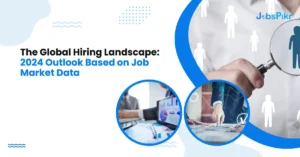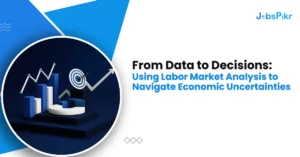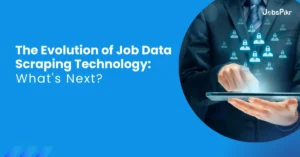The world has been trying to break the shackles of racism and favoritism and create an equal-opportunities workplace. Such a workplace stands on three pillars called– diversity, equity, and inclusion. Like any other talent goal, this one too is usually managed using some degree of automation through Talent Intelligence. Let’s look at what the three pillars mean for a company that is growing and hiring new talent in this turbulent job market–
- Diversity: This usually means that your employee pool should be diverse and contain people from different races, gender, sexual orientation, ethnicity, age group and religion, who have different abilities. A diverse workplace should be encouraged by companies to improve the “ease of work” in your teams, encourage creativity and innovation over favoritism, and in the end, improve your brand reputation.
- Equity: Treating all employees fairly irrespective of their background and judging them only based on their work is what equity stands for. It also means providing everyone with the same tools, resources, and opportunities. An equal-opportunity workplace will see creativity, better individual growth, and more ideas on the table to choose from.
- Inclusion: Inclusion is when employees at every level and job role have the freedom to share their thoughts and ideas. This can only be achieved when there’s no bias of any kind in a workspace. Only an inclusive workplace can create a sense of ownership and belonging. Without inclusivity, your retention rates will continue to plummet and attrition rates will bring down the overall productivity of your workplace.
The importance of DEI in the Workplace.
A diverse, equitable and inclusive workplace is the first choice for those who are applying for jobs. The competitive job market today ensures that individuals look into these factors along with their pay to ensure they have a comfortable and safe work environment. So those that don’t prioritize DEI are likely to struggle when attracting top talent.
While retention is important, so are productivity and employee engagement. A workplace where individuals feel valued and supported are most likely to see better results. On the other side of the spectrum, marginalized or excluded feelings can lead to a less engaged employee pool and productivity can hit rock bottom.

While the benefits we discussed have mostly been internal, there are outward-facing benefits of having a diverse and inclusive workplace too. Be it branding, customer relations, or client-facing tasks– all of them can see a stark improvement when a company takes DEI initiatives seriously. It can also result in free marketing through word of mouth and in many cases, you would achieve results that may not be possible with paid advertisements.
The 3-step Approach
Brands driven by diversity and inclusion will be able to hire from an under-tapped talent pool and get individuals from different backgrounds. These may involve talented women– those who may have taken a work break for their children or older candidates who may have valuable experience but might be facing discrimination due to their age. You can also get access to skilful individuals who are bound by constraints related to geographical locations but who can easily contribute by working remotely. However, before you jump on to managing DEI metrics in terms of hiring, you need to follow a set path–
- Data collection and analysis- The first step here is to collect and analyze data from your current workforce. This data includes different characteristics and details of the existing employees. This data can be gathered from the Talent team or via surveys.
Once all the data is in a single place, you will need to evaluate it and figure out where you lie in the spectrum. In case your figures point towards an inherent bias in the system which benefits one group of employees be it in terms of hiring or elevation to leadership positions, you will need to change the system itself before targeting your DEI goals. For example, if you see that there are very few women managers, you might need to look into previous promotion patterns among women and whether their male counterparts had an undue advantage.
- Set specific goals and OKRs- Rome wasn’t built in a day and setting lofty targets may not be helpful. Instead, you can take up one department at a time or one specific problem statement to being with. Try to solve it, figure out the improvement in percentage, and move on to the next. You will however need to create a dashboard using available tools to monitor any metrics that you are pursuing or that you have worked on previously. This will help you ensure that all the numbers go up with time and that there’s no fallback when you move your focus from one objective to the next.
- Implementation- You get the data, you set the goals…and then you have to implement them. This may require counseling or training sessions for your People management team, managers or even departments. There are chances that some may be averse to change but you will have to tackle them to improve the bigger picture.
The use of Talent Intelligence in Hiring
Talent Intelligence not only helps you streamline the entire hiring process but can also help you incorporate DEI initiatives in a way that they don’t look forced or gimmicky.
Talent Intelligence tools can help you with:
- Creating DEI-based job descriptions that make the job posts more relatable and palatable to all.
- Integrating with third-party tools that use machine learning and AI-based solutions to evaluate employees based on their skill set. Such blind recruiting would remove any inherent bias present in the current manual setup. An anonymous approach will also provide a level playing field for all.
- Setting up an internal and external diversity dashboard. The internal one can have metrics on the current employees that you have along with the diversity of candidates applying to different roles and at different stages in the hiring process. The external one can be set up using supply-demand data of candidates and their skills from different regions.
- Offering sessions to those involved in the hiring process or those in managerial posts so that they can get over their inherent bias and help make the system more even for all.
Managing employees via Talent Intelligence
Talent Intelligence can help you hire a more diverse workforce by creating an even playing field. But you are most likely to lose many of those to attrition if you do not take care of employee management using the same thumb rules. Talent Intelligence helps you do exactly that:
- You can create dashboards for salary benchmarking to find pay disparities that may be specifically targeted towards a group of individuals. These dashboards can collect data from different departments and then generate different charts comparing salaries across race, gender, sexual orientation, nationality, and more.
- Be it chatbots or surveys, you can create anonymous employee interaction points so that you can learn from employee sentiments, detect patterns and follow up with actionable items.
- AI and ML-based tools can be run to prevent cases of unconscious bias that may creep into middle or upper management. This can be done by running the tools on different datasets such as performance review data, OKR data or appraisal and promotion data,
- Talent Intelligence tools will also provide you with more use cases to train your employees on so that they can learn how to handle certain situations proactively and with more sensitivity.
The Benefits of using JobsPikr
Any intelligent system today is only as good as the data that it runs on. When it comes to talent intelligence, you can divide the data that you need into two–
- Internal data- This would be data collated from different departments, managers and leaders, HR personnel, and individual feedback and surveys. It’s most important to normalize all the data collected from different sources and store them in a centralized repository so that they can come in handy while creating data pipelines or intelligence modules or even dashboards or reports.
- External data- Job postings specific to an industry, sector, or geographical region usually fall under this bucket. A real-time job data feed is the best way to ensure that your Talent Intelligence tool is updated and isn’t leaving any data on the table.
So, while the internal data can be collected by some amount of internal collaboration and setting specific data handling and storage standards, you would be needing a third-party tool for the external data feed. This is where our automated job-feed solution for creating a Talent Intelligence Platform for the Labor Market comes in.
JobsPikr can help you make sense of the ever-changing workforce trends across regions and sectors. Planning, forecasting and acquisition of talent– the trifecta can be managed using this tool. Via this tool, our team provides you with an all-inclusive talent insight feed. The future of workforce management and DEI goals can be handled easily when you have the data coming in a specific format such that it can be integrated with your existing Talent Management workflow. JobsPikr will ensure that you not only track where you are going wrong but also keep track of your competition and where they are going right!




